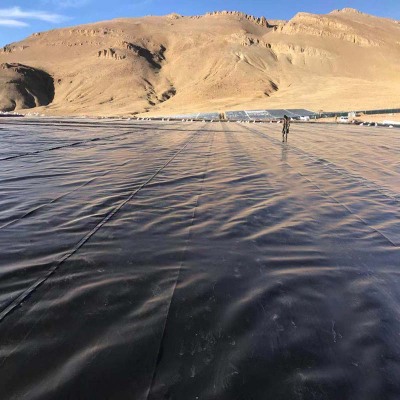
Unpacking the Power of hdpe geomembranes
2025-05-15 22:55
What’s the Secret Sauce Behind HDPE’s Strength?
Battles Chemicals and Wins: This is where HDPE truly shines. It boasts incredible resistance to a vast spectrum of chemicals – acids, alkalis, solvents, and those complex, nasty leachates you find in landfills. Unlike lesser materials that might weaken or degrade, HDPE geomembranes maintain their structural integrity, ensuring long-term, secure containment. Built Like a Tank (But Flexible Enough): HDPE is remarkably tough. It offers excellent tensile strength (resisting pulling forces), superior puncture resistance (though a good subgrade is still key!), and impressive resistance to stress cracking. This means it can handle the demanding conditions of installation and the long-term stresses of being buried deep underground. Shrugs Off the Sun (When Properly Formulated): While no plastic loves endless UV exposure, top-tier HDPE geomembranes are specifically compounded with carbon black and potent UV stabilizers. This gives them excellent protection against the sun's damaging rays, crucial for periods of exposure during installation or even for long-term use in some exposed designs (though covering is always the gold standard for maximum lifespan). Long-Term Value Proposition: While you might look at the initial material cost, think bigger picture. The incredible lifespan of HDPE, coupled with its low permeability (meaning fewer costly leak repairs and environmental cleanups), translates to a lower total cost of ownership over the decades-long life of a project. It's an investment in security and avoiding future headaches. A Legacy of Success: Decades of successful use in critical projects across the globe back up HDPE’s reputation. This extensive track record provides engineers and asset owners with a high degree of confidence in its performance.
Landfill Containment Systems: Absolutely essential for both base liners (preventing leachate escape) and caps (sealing the landfill after closure). Mining Operations: Lining heap leach pads, tailings dams, and evaporation ponds where chemical resistance and sheer durability are non-negotiable. Large-Scale Water Canals: Ensuring minimal water loss in major irrigation projects over very long service lives. Power Plant Ash Ponds: Safely containing coal combustion residuals and preventing groundwater contamination. Critical Secondary Containment: Acting as a failsafe barrier around large chemical tanks or industrial processing areas.
Temperature Matters During Install: HDPE expands and contracts with temperature changes. This needs to be managed during installation – for example, by avoiding work in extreme heat or cold and allowing for some "give" to prevent stress later on. Welding is an Art AND a Science: Creating strong, continuous, leak-proof seams in HDPE requires certified technicians with specialized equipment and proven experience. It's a critical step that demands professional execution. The Ground Beneath Matters: A smooth, well-compacted subgrade, free from sharp stones or debris, is vital. This protects the liner from potential punctures during placement and over its service life.








